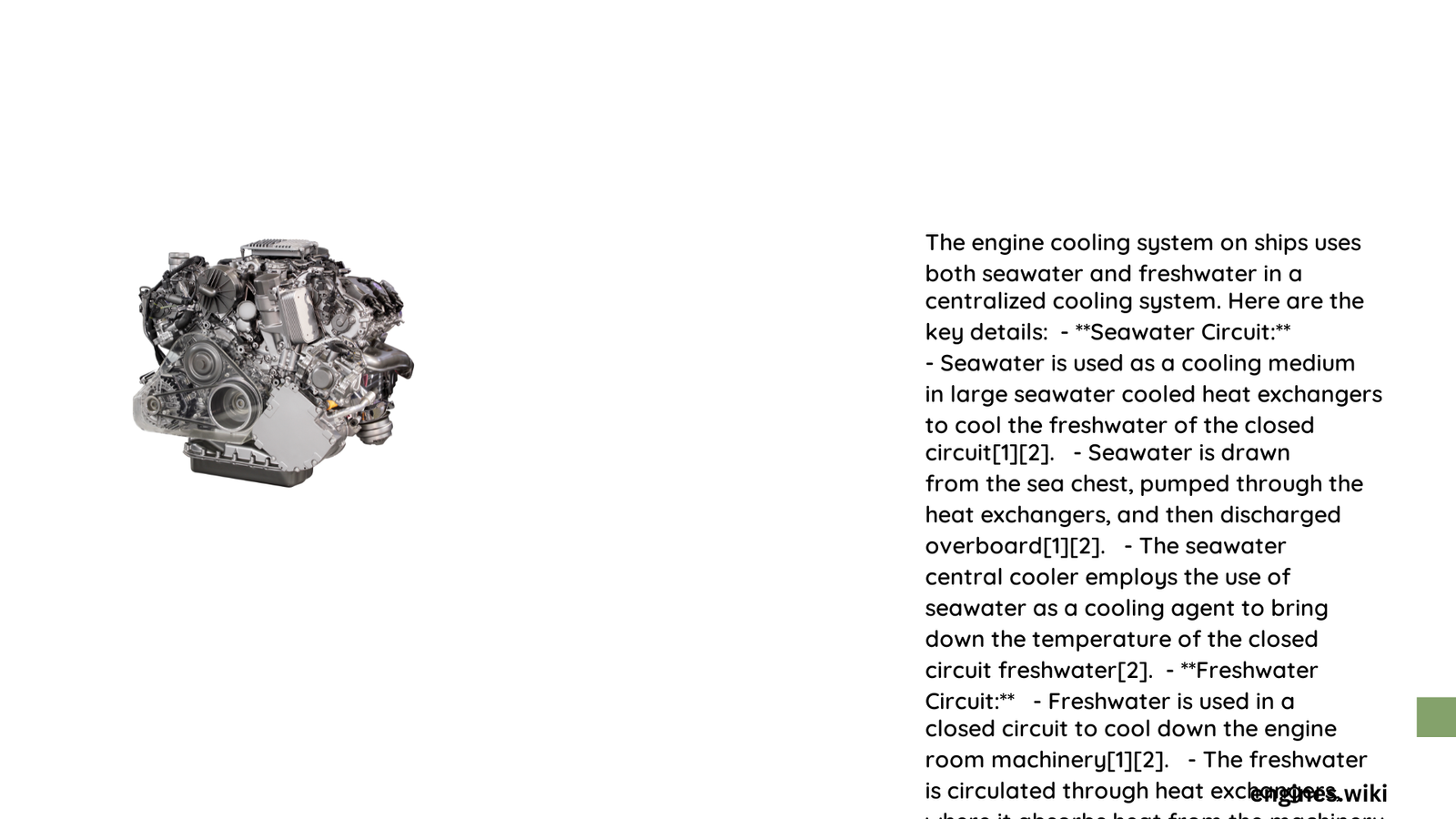Marine engine cooling systems represent a sophisticated thermal management approach that leverages the unique properties of seawater and freshwater to maintain optimal engine performance. These hybrid systems utilize specialized pumps, heat exchangers, and circulation mechanisms to effectively regulate temperature, prevent corrosion, and ensure long-term operational reliability across diverse maritime environments.
What Makes Seawater and Freshwater Cooling Systems Unique?
Marine engines operate under extreme conditions, requiring robust cooling mechanisms that can adapt to varying temperatures and environmental challenges. The hybrid cooling system using both seawater and freshwater provides an ingenious solution to these complex thermal management requirements.
How Do Seawater Intake Systems Function?
Seawater intake systems are the first critical component in marine cooling strategies:
- Sea Chest Design
- Centralized water collection point
- Connected to high-capacity centrifugal pumps
-
Capable of handling large water volumes continuously
-
Pump Specifications
- Typical pump capacity: 2,500 GPM
- Capable of managing heads up to 400 feet
- ABS certified for maritime compliance
| Pump Characteristic | Specification |
|---|---|
| Flow Rate | 2,500 Gallons Per Minute |
| Head Capacity | 400 Feet |
| Certification | ABS Maritime Standards |
What Role Does Freshwater Play in Cooling?
Freshwater serves as the primary coolant in closed-loop systems, offering several significant advantages:
- Temperature Regulation
- High-Temperature (HT) Loop: Maintains engine temperature between 80-95°C
-
Low-Temperature (LT) Loop: Cools auxiliary systems and components
-
Corrosion Prevention
- Reduces metal degradation compared to direct seawater circulation
- Minimizes maintenance and replacement costs
How Are Heat Exchanges Managed?
Heat exchangers are crucial in transferring thermal energy between seawater and freshwater systems:
- Plate Heat Exchangers
- Titanium plates for superior corrosion resistance
- High thermal transfer efficiency
- Compact design for marine applications
What Are the Thermal Management Strategies?
Effective thermal management involves sophisticated temperature control mechanisms:
- Temperature Control Valves
- Mix water from HT and LT systems
- Maintain consistent outlet temperatures
- Prevent thermal stress on engine components
What Protective Measures Ensure System Longevity?
Corrosion prevention techniques are critical in marine cooling systems:
- Material Selection
- Bronze and stainless steel for seawater components
- Titanium for heat exchanger plates
- Specialized protective coatings
What Performance Metrics Define Cooling System Efficiency?
Key performance indicators include:
- Thermal transfer rate
- Corrosion resistance
- Maintenance frequency
- Overall system reliability
Conclusion

The engine cooling system that uses both seawater and freshwater represents a pinnacle of marine engineering innovation, balancing complex thermal management requirements with practical operational constraints.
